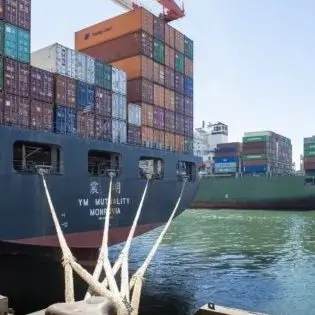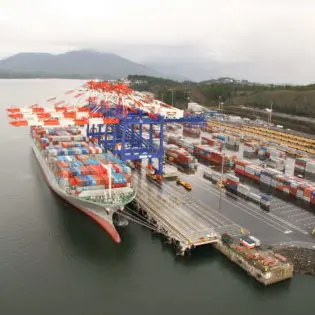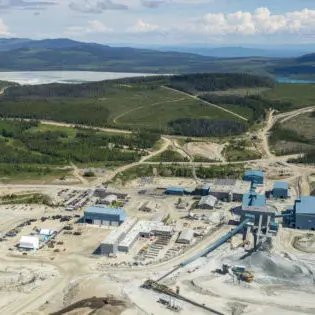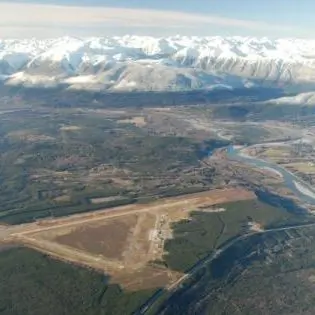North Coast, British Columbia
The North Coast is located by the North Pacific Ocean and covers the northern coastal areas of the province. Its easy access to outdoor pursuits, wildlife, relaxed lifestyle, and growing economy enhance the quality of life in this region. Historically, commercial fishing, logging, mining and critical minerals have been very important to the North Coast economy. The area is home to mills, manufacturing facilities, and hydro projects and has become an emerging hot spot for cultural and ecotourism. It is ideally situated for wind and tidal power generation, and the nutrient-rich waters are an ideal location for shellfish aquaculture.

Regional Advantages

DEEPEST HARBOUR IN NORTH AMERICA
The 14-mile harbour in Prince Rupert is the deepest harbour in North America and the third-deepest natural ice-free harbour in the world.

GATEWAY TO ASIA & BEYOND
Well developed rail, road and port infrastructure supports the movement of goods and services from British Columbia to North American and Asian markets.

MINERAL RESOURCES
The “golden triangle” is home to some of the world’s largest and richest gold, silver and copper mineral deposits.

AVAILABLE INDUSTRIAL LAND
The Skeena Industrial Development Park comprises 1,187 acres near Terrace’s regional airport to further strengthen the area as a hub for Northwest B.C.
Key Sectors

Agrifood, Seafood
& Food Processing

Critical
Minerals

Clean Tech

Agri Tech
Prince Rupert
Located on British Columbia’s beautiful Pacific North Coast and at the mouth of the majestic Skeena River, Prince Rupert is Canada’s Northern Gateway for Asia-North American trade, Prince Rupert is a transportation hub for Northern BC, easily accessible by air (2 hour flight from Vancouver), cruise ship, ferry (BC Ferry or Alaska Marine Highway Ferry), rail (from Prince George), and highway 16. Framed and protected by coastal mountains and islands, Prince Rupert has the world’s second deepest, natural, ice-free harbour and it is North America’s closest port to Asia. The harbour is home to a modern cruise ship terminal and a new, expanding container terminal that moves goods of all kinds between Asia and the rest of North America. An established and highly efficient inter-modal transportation network connects Asia to the heart of Canadian and US consumer markets. Prince Rupert has long been a major force in fishing and seafood harvesting. Prince Rupert is also establishing itself as a hot spot for renewable energy, aquaculture, and cultural and eco-tourism opportunities. It is ideally situated for wind and tidal power generation and the nutrient rich waters of the North Pacific are a perfect location for shellfish aquaculture.
Terrace
Perfectly positioned to take advantage of the billions of dollars in major developments occurring in mining, green energy and LNG, Terrace is the location of choice for many established businesses and entrepreneurs. Boasting the largest regional population base in this part of the province, Terrace is the service, educational and medical hub of the region. Terrace is centrally located at the crossroads of Highways 16, 37 and 113, and our close proximity to three deep water ports, rail service, and a bustling airport all serve to connect Terrace to the rest of the world.
Communities
With a population of 59,000 people spread over nearly 124,000 square kilometers, the North Coast region offers space for a wide range of lifestyles. Key cities include Prince Rupert, a gateway for Asia-Pacific trade, and Terrace, a service hub in the region, which provide opportunities that attract industries, tourists, and businesses. Prince Rupert is a welcoming and affordable place, with state-of-the-art transportation, abundant natural resources, and countless business development opportunities related to port development. Terrace is well positioned to take advantage of the major developments in critical minerals, green energy and LNG, making it the location of choice for established businesses and entrepreneurs.
Discover more facts and statistics about this region:
Regional Economic ProfileEconomic Development Organizations
First Nations
Commercial fishing, eco-tourism, forestry, natural gas and mining make up a large part of the regional economy.
Development corporations— owned collectively by aligned First Nations or by individual First Nations— are the primary vehicles by which First Nations pursue and advocate for sustainable economic development.
Learn more about First Nations in BCEconomic Development Organizations
- BC Assembly of First Nations – North Coast
- Heiltsuk
- Gitwinksihlkw Village Government
- Tahltan Nation Development LP
- Gitanmaax Development Corporation
- Gitgaat Development Corporation
- Gitxsan Development Corporation
- Haida Enterprise Corporation
- Kitselas Development Corporation
- Lax’Kw’alaams Business Development LP
- Old Masset Village Council
Regional Profile
Educational Institutions

The University of Northern British Columbia (UNBC) is a research-intensive public university with a campus in Terrace.

Coast Mountain College is an accredited post-secondary institution that serves the rich and diverse communities and learners of B.C.’s beautiful Northwest region.
Connect With A Regional Expert
Regional experts can help familiarize you with the amenities, infrastructure, and opportunities in each region. They can introduce you to the economic development offices and industry associations that will support the integration of your business into the province.

